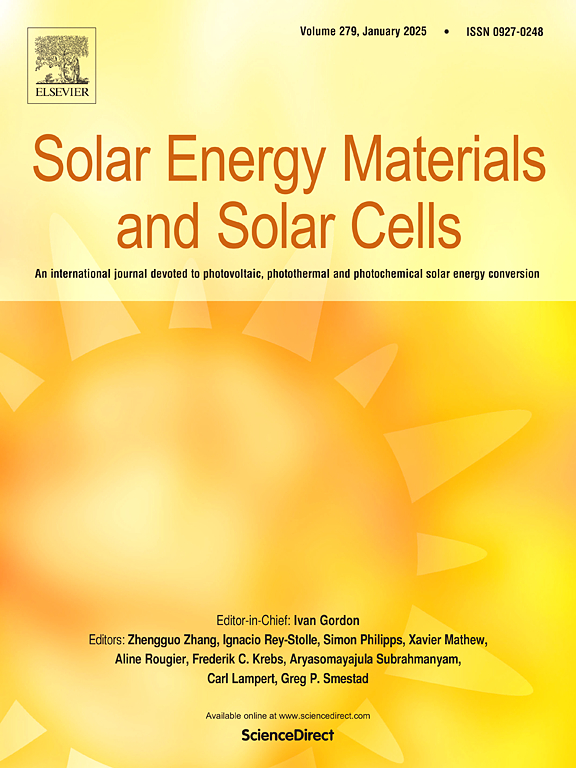Efficiency enhancement in 4T perovskite/Si tandem solar cell by charge extraction management
IF 6.3
2区 材料科学
Q2 ENERGY & FUELS
引用次数: 0
Abstract
High power conversion efficiency in 4-terminal perovskite/silicon tandem solar cells depends on minimizing optical losses and enhancing charge extraction in both sub-cells. Here, partially passivated nanorods with hexagonal and honeycomb lattice patterns are employed, for the first time as an electron-transporting layer in the top cell. This leads to compensation of the resistive losses and improves the charge extraction process which results in the enhancement of the fill factor while preserving Voc. Also, interdigitated back contact has been implemented in the bottom cell to eliminate the shadowing effect and reduce the parasitic absorption. Additionally, the Si3N4 anti-reflection coating decreases optical losses in the bottom cell. The optimal structural specifications for rods at the top cell with a hexagonal pattern are r = 75 nm and a = 750 nm for the rod's radii and lattice constant, respectively in a 600 nm perovskite layer. Also, the interdigitated back contact bottom cell with the Si layer thickness of 290 μm was optimized for Wn/Wp = 0.2 and Gap = 5 μm. Cascading the proposed optimal sub-cells in a 4-terminal configuration led to the highest power conversion efficiency of 30.73 % ever reported, with the top and bottom cells contributing 23.34 % and 7.39 % to the overall efficiency, respectively to the best of the author's knowledge.
求助全文
约1分钟内获得全文
求助全文
来源期刊

Solar Energy Materials and Solar Cells
工程技术-材料科学:综合
CiteScore
12.60
自引率
11.60%
发文量
513
审稿时长
47 days
期刊介绍:
Solar Energy Materials & Solar Cells is intended as a vehicle for the dissemination of research results on materials science and technology related to photovoltaic, photothermal and photoelectrochemical solar energy conversion. Materials science is taken in the broadest possible sense and encompasses physics, chemistry, optics, materials fabrication and analysis for all types of materials.
 求助内容:
求助内容: 应助结果提醒方式:
应助结果提醒方式:


